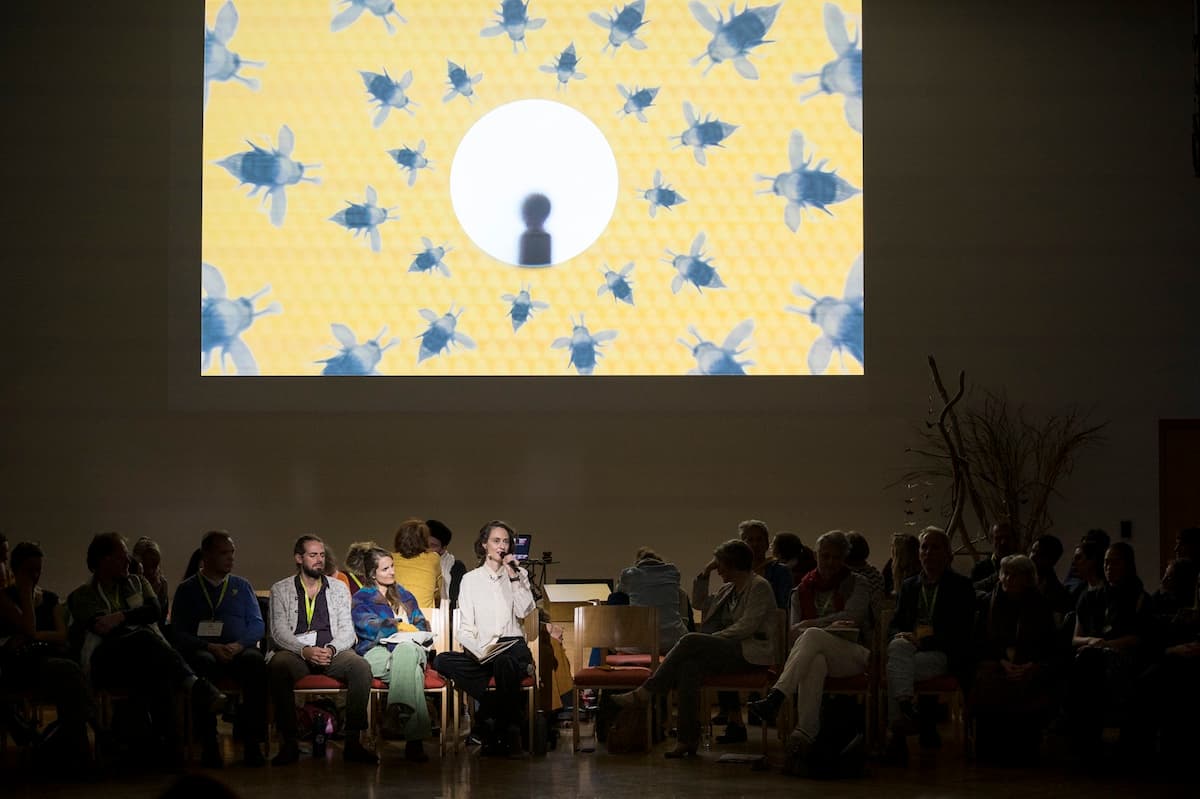Welcome to the Bees, the Common Heather & the River Thames!
Three new Early Adopters join the I Stand Beside community this month. Each one is an invitation to look closer at the worlds that sustain us. 🐝 Angelika Lauber stands beside the Bees (Family Apidae) “Bees make complex group decisions that ensure their wellbeing and thriving without top-down hierarchy.” For Angelika, the hive is both […]
Three new Early Adopters join the I Stand Beside community this month. Each one is an invitation to look closer at the worlds that sustain us.
🐝 Angelika Lauber stands beside the Bees (Family Apidae)
“Bees make complex group decisions that ensure their wellbeing and thriving without top-down hierarchy.”
For Angelika, the hive is both metaphor and mentor. What began in beekeeping grew into an art practice exploring collective intelligence and the rituals that once bound humans and bees together. Her interactive bio-art installation, Telling the Bees, revives an old European custom in which people whispered their joys and sorrows to the hive, recognising bees as kin.
Visitors now speak into a glowing honeycomb heart. Their voices are recorded and played to living colonies as a gentle experiment in interspecies communication.
“Bees are vital to our planet’s biodiversity — pollinating entire ecosystems and ensuring food security.”
Yet, the IUCN lists 156 bee species as vulnerable.
💜 Harveet Purewal stands beside the Common Heather (Calluna vulgaris)
“Heather helped me discover my passion for plants and cured my plant blindness.”
Harveet’s connection to heather began as a teenager hiking the moors after A-levels, when the hills blazed purple under an open sky. That first encounter with Calluna vulgaris became a lifelong fascination with plant life and a pathway into climate and biodiversity policy.
“There is something somewhat poetic about how such a beautiful small bush can grow in a windswept landscape of the UK’s moors.”
Harveet is a youth climate advocate with YOUNGO (the UNFCCC youth constituency). He has co-written the Global Youth Statement on biodiversity and climate for COP30. His championing of heather moorlands is rooted both in science and spirit. He says that these landscapes are “fragile ecosystems, with alarming amounts being lost each year mainly due to pressures from overgrazing.”
Standing beside heather is, for him, also an act of cultural connection: “My own culture (Punjabi) has a deep cultural and spiritual affinity to land and soil.”
🌊 Anya Gleizer stands beside the River Thames
“Having lived here [near the Thames] for seven years, about 75% of my body is its waters and so is yours…”
For Anya, the Thames is both companion and teacher. “The river first welcomed me to this country,” she writes, recalling her Oxford interview years ago. Since then, she has devoted her energy to protecting it through the Oxford Clean Rivers Initiative, Friends of the Thames, River Action and Thames21.
She speaks of the river’s double nature as both a sustainer and sufferer.
“It gives life to these institutions we so value, and washes away all our dirty secrets and sins (ahem Thames Water).”
The Thames watershed is under pressure from sewage, runoff and climate stress, yet Anya insists on love as the right response:
“Like a relative who is ill, the Thames must be cared for all the more at this time.”
✨ A Hum, a Bloom, a Flow
Each of our new Early Adopters asks a different question of us:
How might we listen as bees do, decide together without hierarchy?
How might we root like heather, small but steadfast on the wind?
How might we flow like the Thames, holding all that passes through?
Welcome, Angelika and the Bees, Harveet and the Heather, Anya and the River Thames.
Your beings join the growing chorus of I Stand Beside, a movement of kinship, curiosity, and care.
